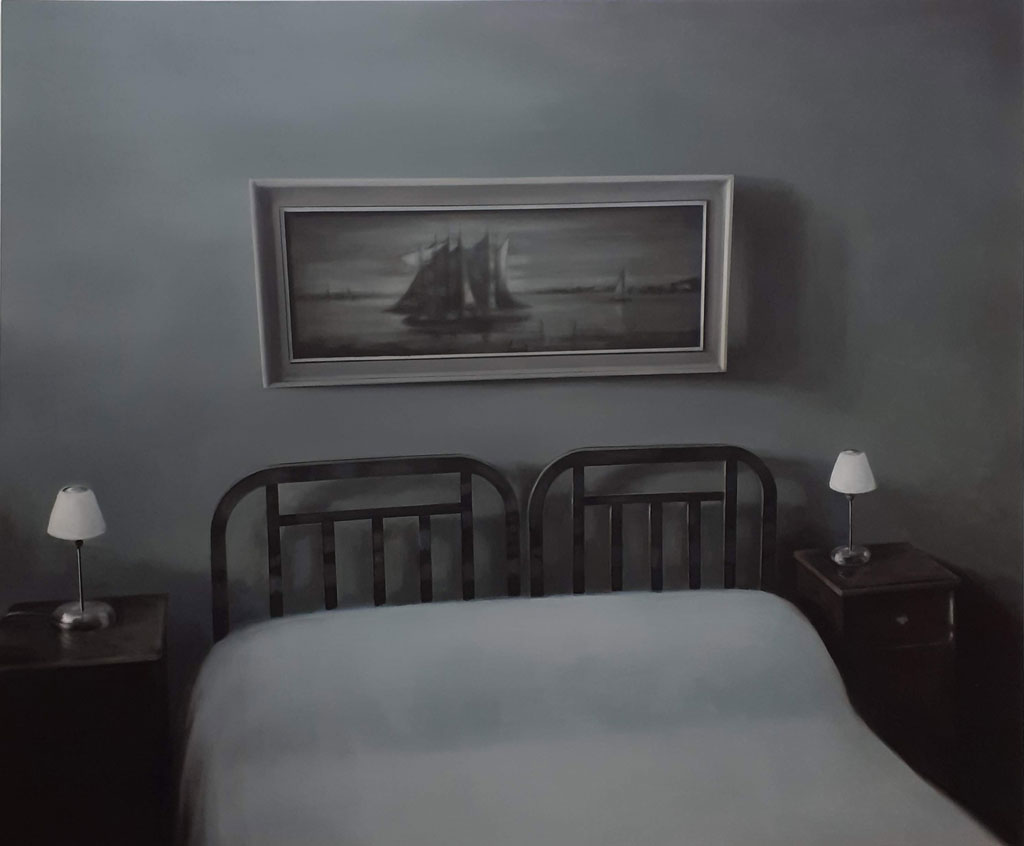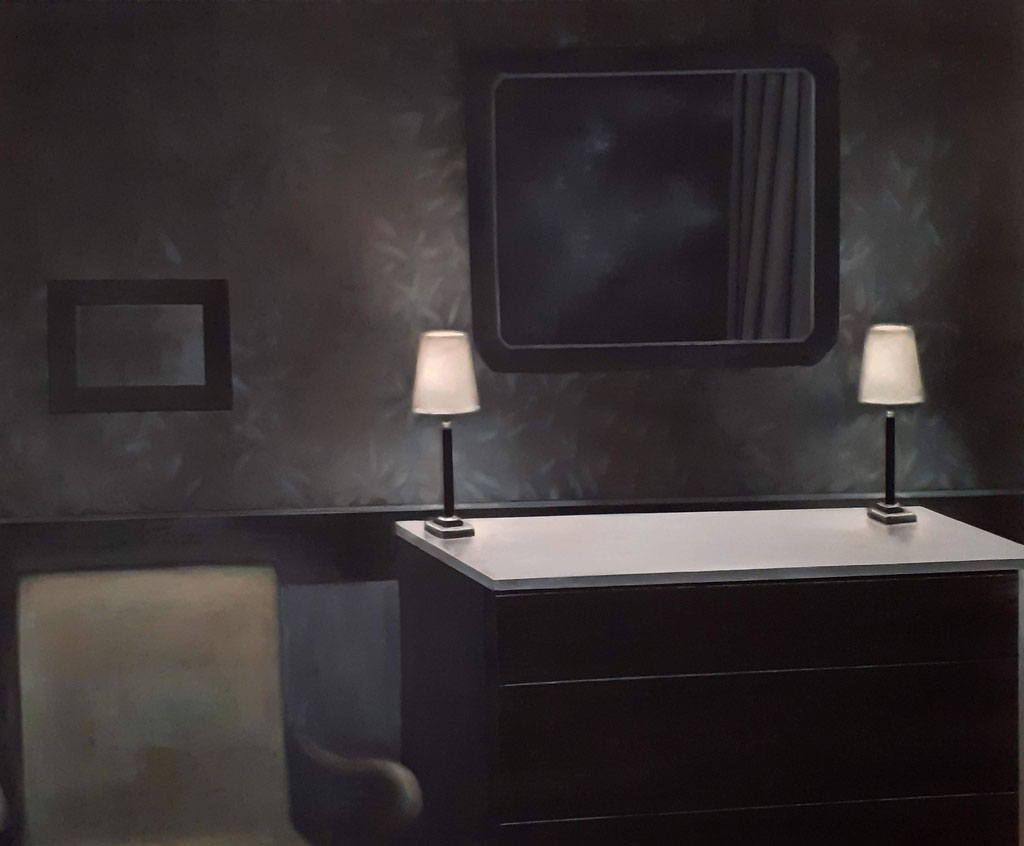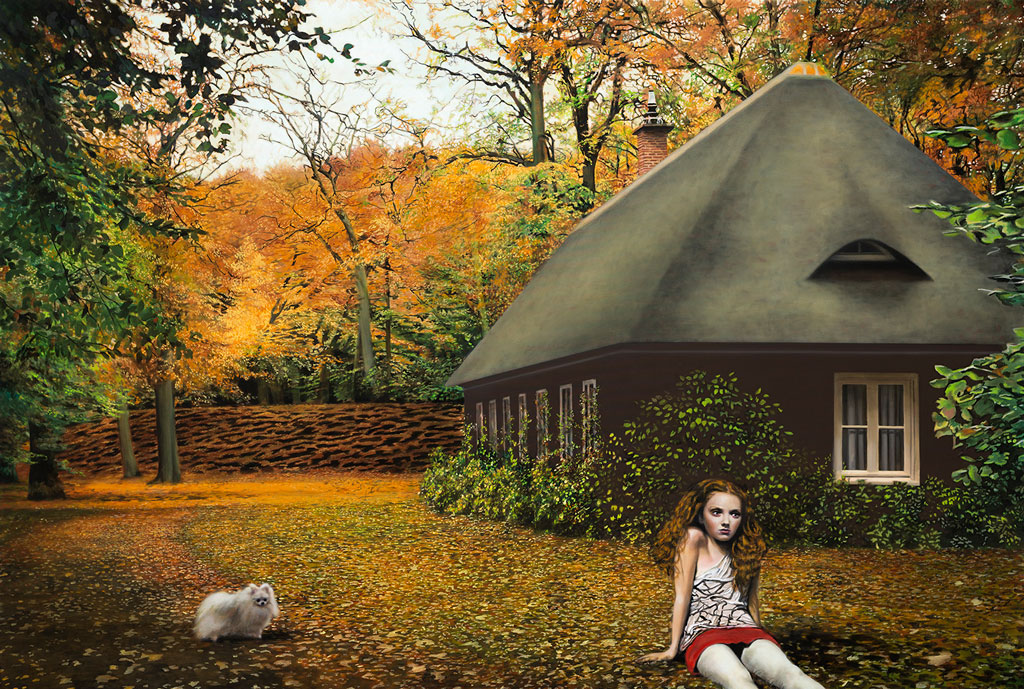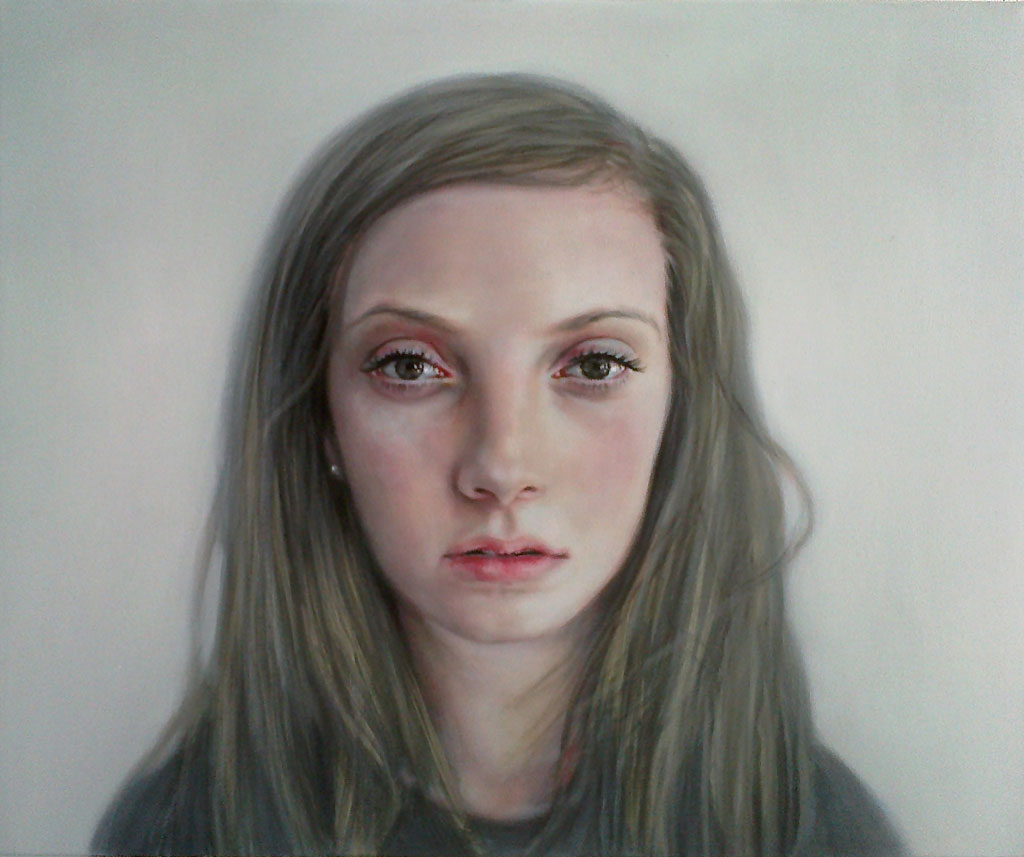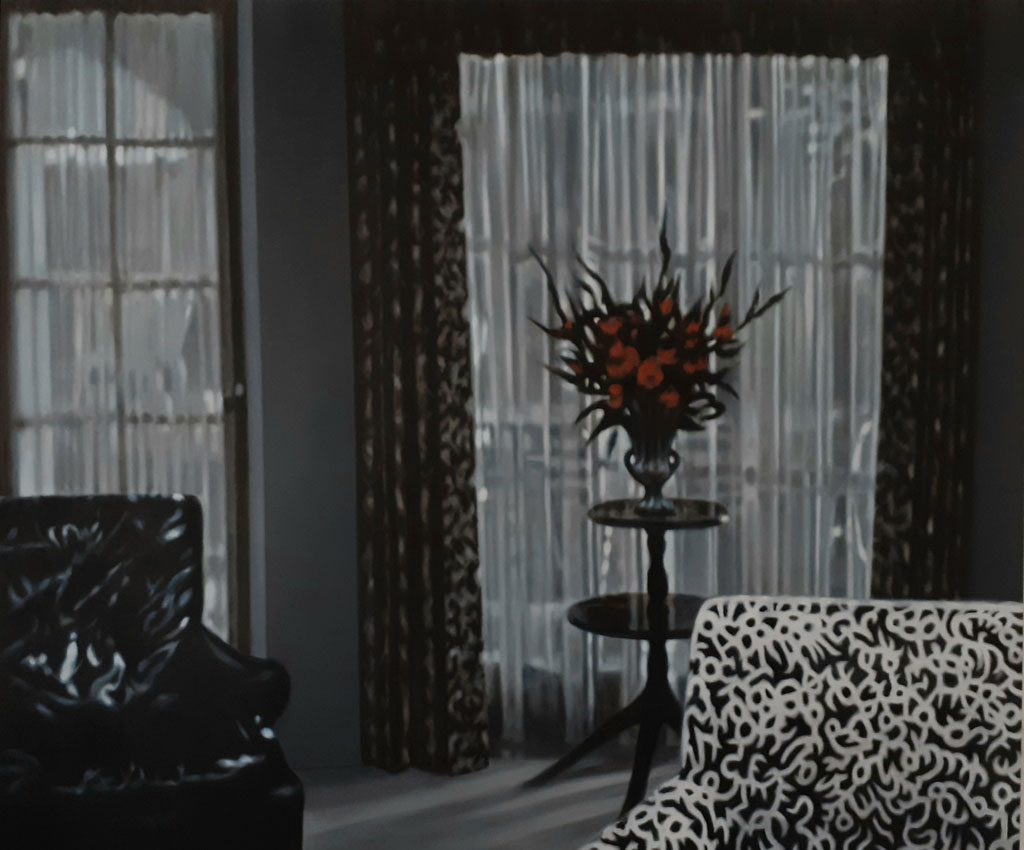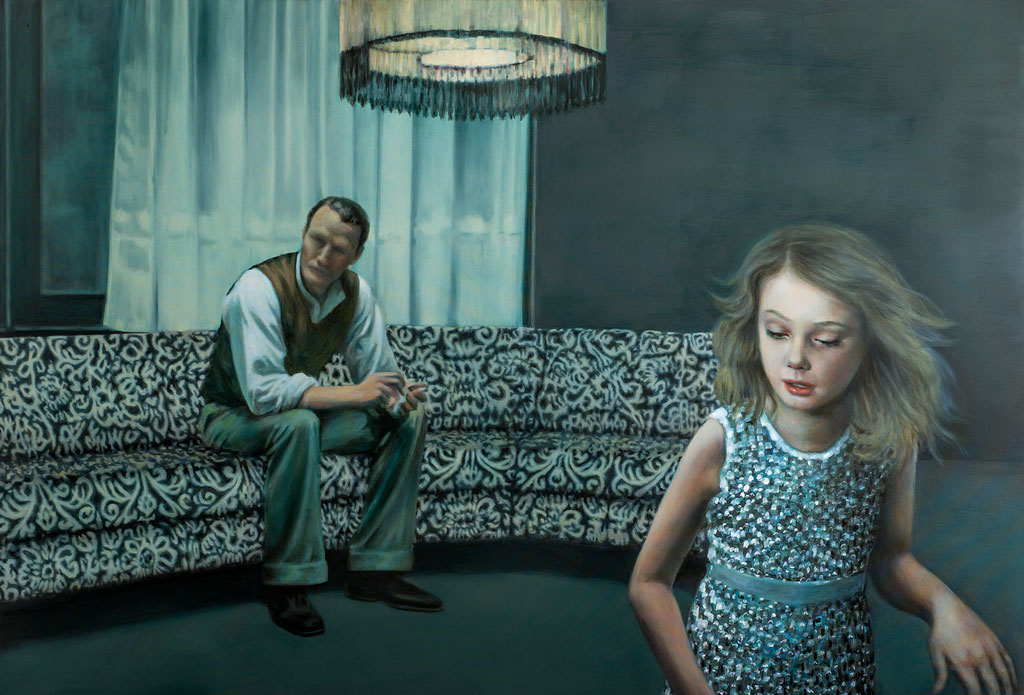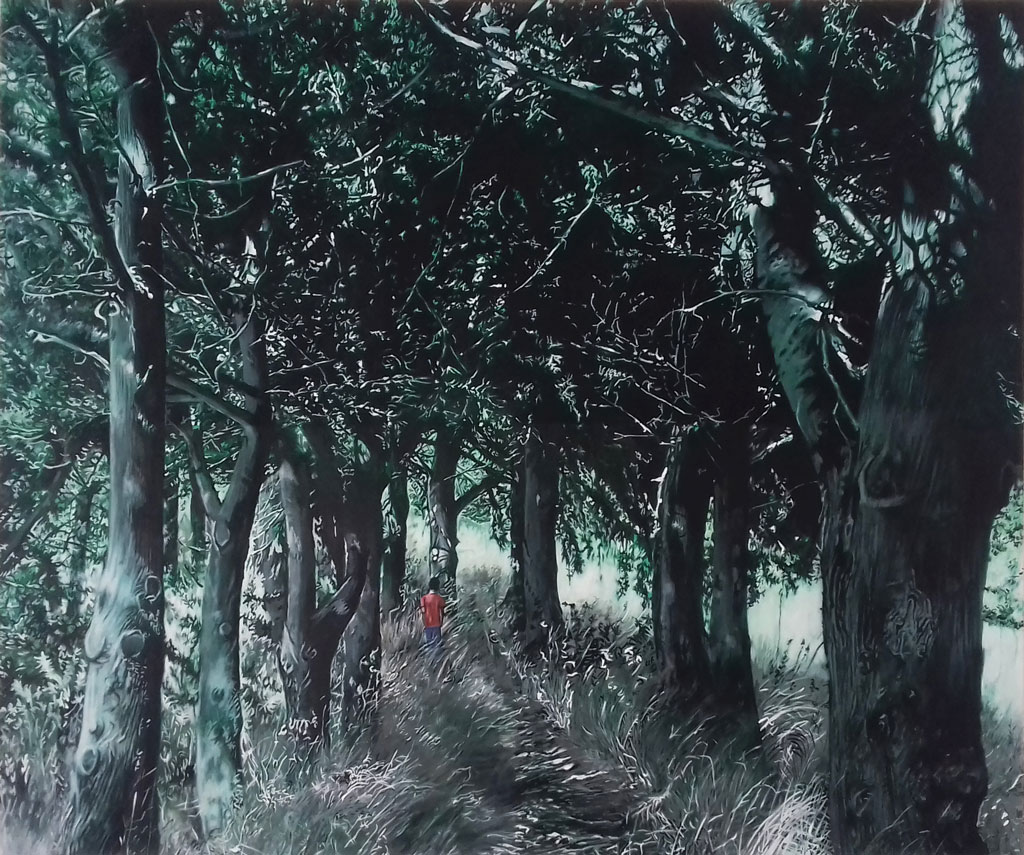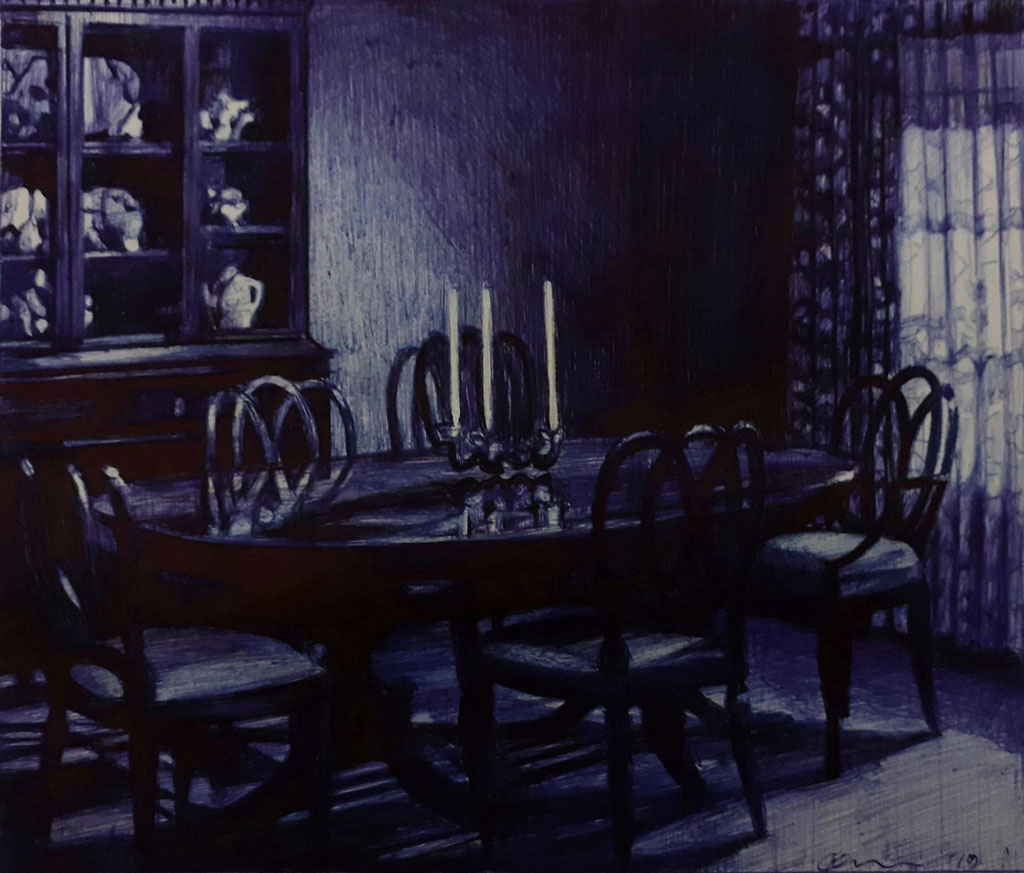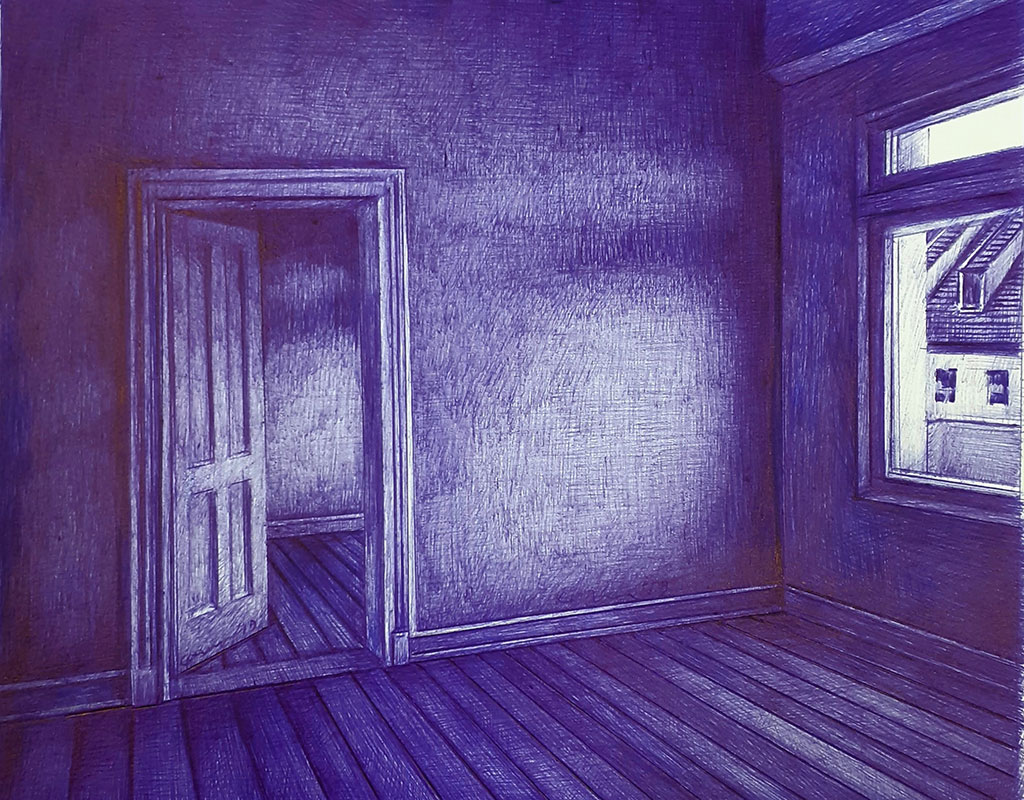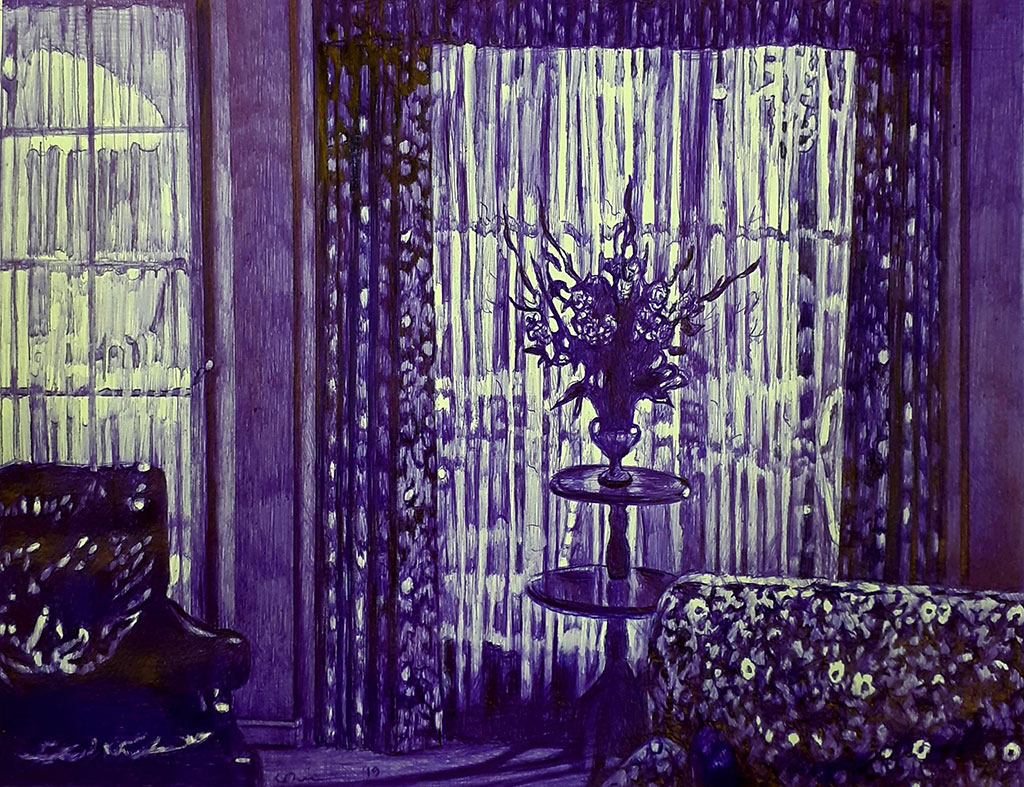INTERVIEW: Mantalina Psoma
 Although I prefer abstract painting compared to realistic, in the case of Mantalina Psoma, her works have gained a special place in my preferences, from her very first appearance in the field of art at her solo exhibition in Rebecca Camchi Contemporary Art Gallery in Athens, because they are an amalgam between painting and cinema classic novel. The interview that follows whilstarted on the occasion of her new works (oil on canvas and ballpoint pen) two weeks ago, in real time belongs to a dialogue that we have started between us a long time ago, in the meantime my visit to her studio on September 2019 is interpolated. But most of all, what keeps our dialogue alive, is the common language and code of communication, which we cite to you to decode it.
Although I prefer abstract painting compared to realistic, in the case of Mantalina Psoma, her works have gained a special place in my preferences, from her very first appearance in the field of art at her solo exhibition in Rebecca Camchi Contemporary Art Gallery in Athens, because they are an amalgam between painting and cinema classic novel. The interview that follows whilstarted on the occasion of her new works (oil on canvas and ballpoint pen) two weeks ago, in real time belongs to a dialogue that we have started between us a long time ago, in the meantime my visit to her studio on September 2019 is interpolated. But most of all, what keeps our dialogue alive, is the common language and code of communication, which we cite to you to decode it.
By Efi Michalarou
Photo: Mantalina Psoma Archive
Mrs Mantalina Psoma observing closely your body of word, over the years, we note that while it is close to Daniel Richter’s and Edward Hopper’s even Balthus’ paintings, and certainly has influences, in the end it doesn’t look like it. What are the “Elective Affinities” according to Johann Wolfgang Goethe for you, with all these great painters and what are the points of discrepancy?
Richter’s realistic painting worked for me primarily as a means of “exculpating” for my decision to dare to paint more realistically in the late ’80s, when I was preparing my degree thesis at the Berlin School of Fine Arts, as the climate that prevailed then at the school was very negative towards painting, particularly considering realistic. At the same time, I really liked the atmosphere of his black and white paintings. So far, I am using the “fluttering” technique in my paintings but, unlike Richter who does it in all his realistic works, for me it just works as another technique where and when I need it, I mean when I want to give the impression of speed or depth, of “not focused”. I was also very influenced by Richter’s writings about painting. In the late ’80s, I discovered Edward Hopper and had the chance to admire some of his works in the exhibition “Metropolis” (20/4-21/7/199) at Martin-Gropius-Bau-Berlin. For me Hopper was an “Apocalypse”, equivalent to painters like: Vermeer, Hans Holbein, Lucas Cranach etc. However, I consider myself more anthropocentric than Hopper, and for this reason I insist much more on characteristics that emphasize expression and feelings and what they emit, when and whenever people appear on my paintings. Indeed Balthus belongs to the painters who have influenced me, not thematically, but in the way he stages his artworks and in his color palette. Even now, whenever I look for a hue and I am blocked it out, often is helpful to browse through a thick catalog of his works …
As we know you studied painting, lived and worked in Berlin the period 1985-2001, this is obvious in your work, as well as your influences, since the scenes that are reflected on your canvases are closely related to the photographers of the so-called Düsseldorf School. How much did this particular environment affect you?
The Dusseldorf School of Photography didn’t affect me much, at least consciously. Only Thomas Ruff with his huge portraits influenced me the period I returned to realistic painting, in the late1990s and I used my friends and relatives in my work to stare at the viewer… (the period 1992-98, mainly because of insecurity, I tried my luck with more abstract shapes in an attempt to be more synchronized with my “era”). The scenes depicted on my canvas, are resulting more from cinema. I’ve been inspired and influenced by favorite directors like: Alfred Hitchcock, David Lynch, Wim Wenders, Krzysztof Kieślowski, Andrei Tarkovsky, Luis Buñuel, Michelangelo Antonioni, Theodoros Angelopoulos and many-many more. Due Berlin is a cinephile city and the free time comfort I had, those years I was able to watch too many movies. However the scenes I save in my archive for editing come mainly from horror movies, artisticaly oblivious, but looking at them in “fast forward” I find images that help me create my own backdrop, which I continue to do here in Athens, of course. I believe that the main element that has influenced my painting since my stay in Berlin are the experiences I lived there and the light, in the literal sense, the dim and cold European North, elements that inspire me for creation but not for a long stay…
Why did you decide to return to Greece after so many years? Did you regret it? Do you think that if you had stayed in Berlin, you would have had another career path and maybe a biger international career?
At the end of my previous answer, I answered this question partially … The main reason for my decision to return to Greece was that I was very tired of the Berlin climate. The 15 years of my stay in Berlin, made me feel more homesick than Ulysses… In 2000 an exhibition curated by Dimitrios Antonitsis in Hydra island and was the cause to stay for one and half month in this magic island, combined with my collaboration, which started then with Rebecca Camhi Gallery, were the factors that contributed to my decision to return to Greece. I don’t know if I would have a different course in Berlin. The truth is that the professional relationships I gained in Berlin stemmed from the success I had here in Greece, I think mainly because of the confidence I gained and dared to take some more extroverted steps. The fact that I’m not German in combination with my guilty nature, didn’t help me when I was living in Berlin. However, I love Berlin maybe more than Athens and every time I visit the city I feel like I home…
Although I do not particularly like contemporary realistic painting, only selectively, your works touch me deeply, because they are like scenes from psychological thrillers or film noir, like excerpts from classical literature, but also like contemporary photography as I mentioned earlier. But most of all, I like them because they are so simple and poetic that touch, if there is the term, Realistic Minimalism. What are your sources of inspiration? Ηow do you manage to tell your stories on canvas in such a minimal and at the same time realistic, but not raw, poetic but not dramatic way?
I am very glad that my work manages to touch a human like you who is repelled by realism! I also like the term Realistic Minimalism! The truth is that and I rarely like contemporary realistic painting, because it’s usually limited to visualization, which is boring, or in painting for painting, equally boring if not even more indifferent, either in the arbitrary self-employment and self-satisfaction, either in a reproduction of a mainstream perception. Generally, rarely sees something original that can simultaneously touch the viewer and to “say” something really interesting. A painter who has profoundly affected from my first steps in realistic painting, is Mark Rothko, as strange as it may sound, because of the atmosphere and the existential questioning that stems from his works… The minimal way of narrative you mention, is an element that I have consciously chosen as I follow very strict rules in my work and narrative. The most important is that I don’t allow anything in my work that has no real reason to exist and I remove everything that can go away. I’m not loading the canvas with insipid details and smart-ass effects, I do not leave brush “traces using a dripping paintbrush, I don’t scratch the canvas, I don’t stick anything on it, I don’t make it three-dimensional by expanding it into space, I don’t like the easy challenge so I don’t use violent or sexual themes, Idon’t distort etc. I try to “provoke” with the existential atmosphere and the messages to be decrypted, which possibly may result from my paintings.
Unfolding the thread of time running your projects that stream across your artworks, what has changed is the color, which are tougher, dingy and at the same time contain certainty. The point, that characterizes you is this lonely female figure that looks like you and the viewer is not sure if it is you. Is it related to the conscious and the subconscious? Is she a self-judge, an observer? Does this figure accompany you in your dreams and nightmares? is she a guardian angel?
All this are probably true, less elsewhere less and elsewhere more consciously.
Why your oil paintings of the 2019-2020 period are so overwhelmed by gray and loneliness? Although the human presence is felt through the objects and the way you place them on the canvas. Also, in the relationship between interior and exterior, you focus more on the interior. Is it a result of the economical crisis? Did crisis push you into a more inner state and a personal introspection? Was for you a springboard for artistic creation for you, as our friends abroad, support and expect by Greek artists?
Quite the contrary, I would say, at least in the early days of the crisis, where I was gradually subjected to an economic bleeding, I was forced to look for other ways to find money and inadvertently come out of my introspection and self-examination, thus I moved daway from inspiration and creation and my mood was very low. Fortunately, my efforts to find other professional activities did not have much financial results, so I again focused on my painting, simply undertaking some things on my own to promote my work. These paintings with the empty interiors belong to the concept of the new series I am preparing. How I was influenced in choosing this theme and color palette by the financial and personal crisis is probably a bit early to decide. Certainly, though, all of this made me bolder and less vulnerable to the criticism of the others to me and my work.
However, there is light in your works, which carries a message of hope. The moment in which this interview is taking place is not the best, with half the planet quarantined because of the COVID-19 pandemic, but personally, I believe that it is a moment that will help us to redefine and the awakening that has not emerged from the economic crisis, will result from this moral crisis here. Do you agree?
Despite the fact that the works I make, express the “darkest” places of human existence and they often contain the element of the threat as the main component of emotional experience,as a human being I am optimist and perhaps unconsciously this element penetrates in my work. Ι wish to happen as you say, to get rid of the extreme narcissism that has flooded everything in recent years and restore some forgotten values in our daily lives!
I would like to close our interview promising: ink-ballpoint pen… Suddenly you pass from a strong medium (oil on the canvas) in a light one, ink on paper. What is the reason for this transition, how did it come about? These artworks, look like fairy tales, allowing you to penetrate deep into them and dream… a better world.
These projects definitely started out of the crisis. I was looking for a way to create small works, a bit faster than their equivalent in oil on canvas and more affordable. I thought about the ballpoint pen because I had created a lot, long time ago in Berlin, drawings with ballpoint pen influenced by Jan Fabre’s artworks and I really liked the whole process, that chickie chickie, the particular blue hue, even the smell… Indeed, these works have a completely aura of their own, personally they recall on my memory illustrations from old fairy tales, I don’t know if they let you dream of a better world, but if you feel that way, I’m glad!!!
Download Greek version here.
First Publication: www.dreamideamachine.com
© Interview-Efi Michalarou
